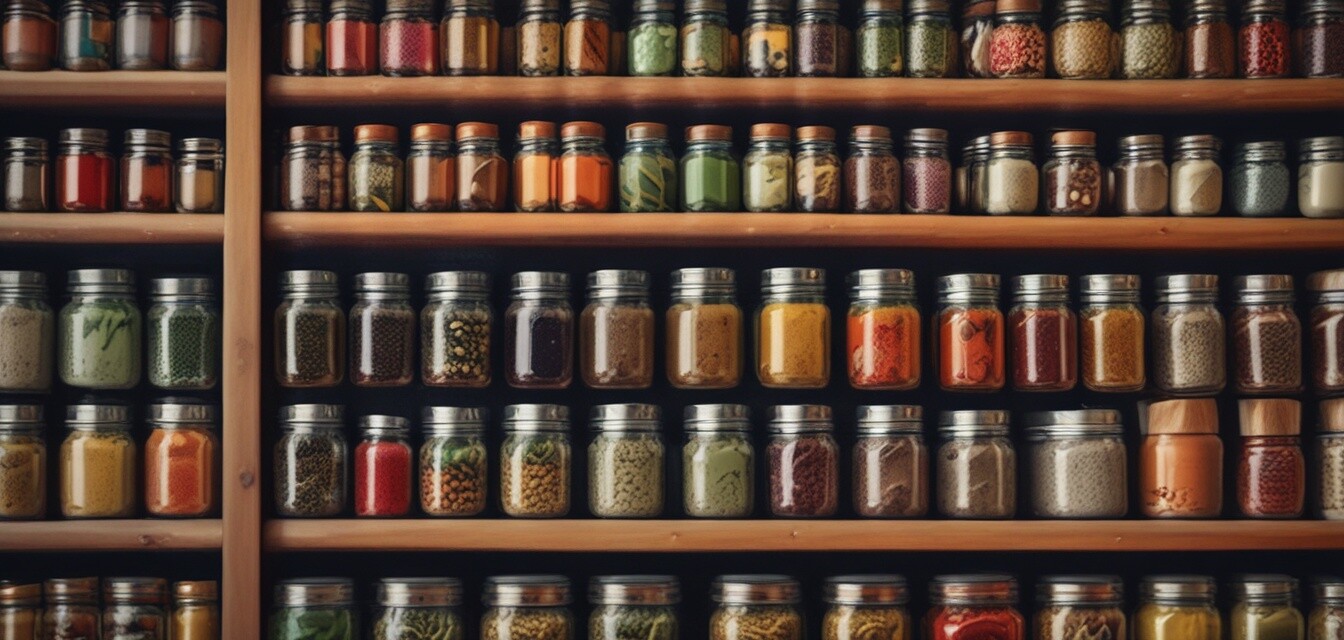
Essential Spice Rack Setup for Beginners
Key Takeaways
- The right spices can enhance the flavor of any dish.
- Starting with basic spices will make cooking more enjoyable and flavorful.
- Organizing your spice rack effectively provides easy access and encourages experimentation.
- Consider purchasing spices in bulk or high-quality brands for the best flavor.
Setting up a spice rack may seem like a daunting task, especially for beginners in the culinary world. However, a well-stocked spice rack is essential for enhancing flavors and elevating your home cooking. In this guide, we will walk you through the must-have spices for your spice rack, tips for organization, and clever storage solutions to ensure your spices are always at hand.
Must-Have Spices for Your Spice Rack
As a beginner, it's important to start with a selection of essential spices that can be used in a variety of dishes. Here’s a list of staples that every home cook should consider:
| Spice | Description | Common Uses |
|---|---|---|
| Salt | A mineral essential for enhancing flavor. | Used in almost all savory dishes. |
| Pepper | Ground from black peppercorns for a mild heat. | Used for seasoning and flavoring almost any dish. |
| Garlic Powder | A versatile spice that adds an aromatic flavor. | Used in meats, sauces, and vegetables. |
| Onion Powder | Concentrated flavor of onions. | Perfect for seasoning soups and stews. |
| Paprika | A flavorful spice made from ground red peppers. | Common in stews and as a garnish. |
| Oregano | A savory herb often used in Mediterranean dishes. | Great for pasta sauces and grilling. |
| Cumin | A warm, earthy spice typically used in Mexican and Indian cuisine. | Ideal for chili and curry dishes. |
| Basil | A sweet herb commonly used in Italian cooking. | Perfect for salads and pasta dishes. |
| Thyme | A versatile herb that adds depth of flavor. | Used in chicken, vegetable, and fish dishes. |
Setting Up Your Spice Rack
Once you have your essential spices, setting up your spice rack is the next step. Here are some tips on how to organize and store your spices effectively:
Tips for Organizing Your Spice Rack
- Choose the right location: Keep your spice rack near your cooking area for easy access.
- Use clear containers: Use glass or labeled containers to easily identify spices.
- Group by flavor: Organize your spices based on sweet or savory to help in meal prep.
- Keep a spice inventory: Maintain a list of your spices and their expiration dates.
- Consider a lazy Susan: A rotating spice rack can save space and allows for easy access.
Choosing Quality Spices
When selecting spices, quality matters. Here are some considerations when buying spices:
- Buy in small quantities: Purchase spices from specialty stores in small amounts to ensure freshness.
- Explore different brands: Some brands offer higher quality spices than others, so do some research.
- Opt for whole spices: Whole spices last longer and can be ground as needed for peak flavor.
- Check expiration dates: Always check for freshness before purchasing.
Experimenting with Spices
The ultimate goal of having a well-set spice rack is to inspire you to experiment in the kitchen. Don’t be afraid to:
- Try new recipes that incorporate unfamiliar spices.
- Adjust the seasoning of your favorite dishes to suit your taste.
- Mix different spices to create your signature spice blend.
For more guidance on cooking tools and essentials, check out our cookware sets to find the right items to complement your spice usage.
Conclusion
Setting up a beginner's spice rack is a rewarding journey that adds flavor and excitement to your cooking adventures. By starting with the essential spices, organizing effectively, and choosing high-quality options, you're well on your way to culinary success. Encourage yourself to be bold and try new flavor combinations and cooking methods. As you grow in confidence, your spice rack can expand to include even more unique ingredients. Happy cooking!
Pros
- Enhances the flavor of dishes.
- Encourages creativity in cooking.
- Simple setup process for beginners.
Cons
- Requires occasional restocking of dried spices.
- Can be an initial investment for quality spices.